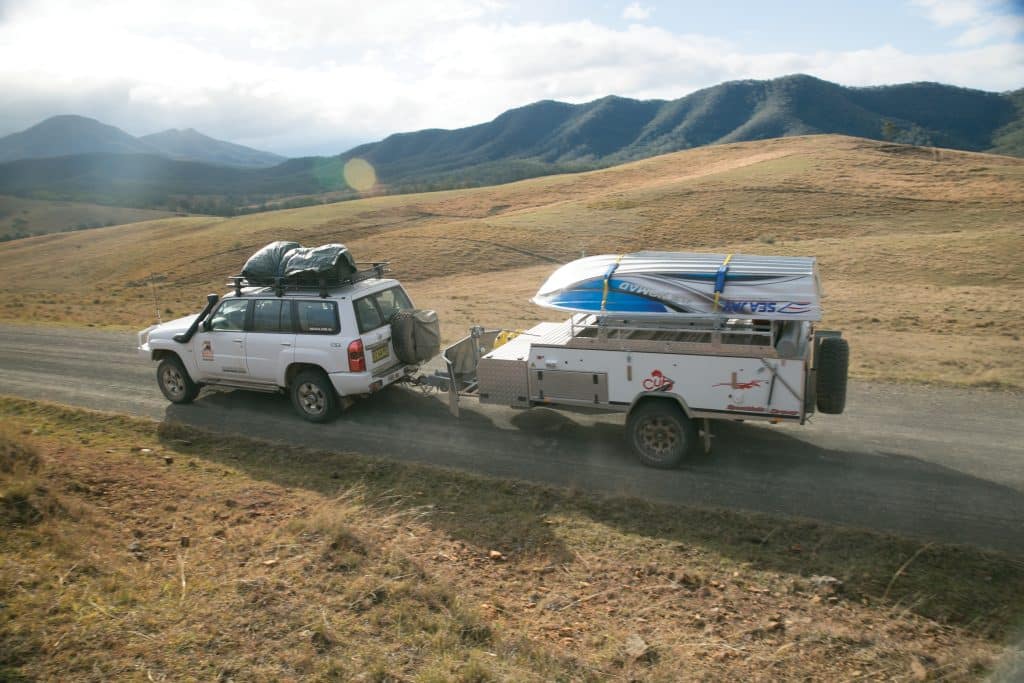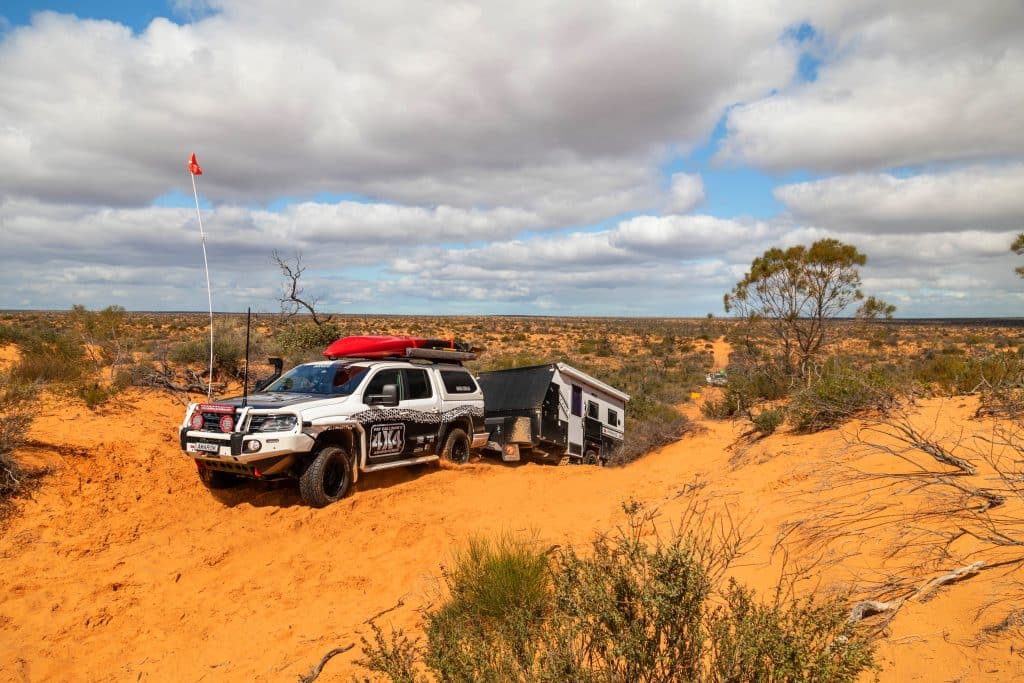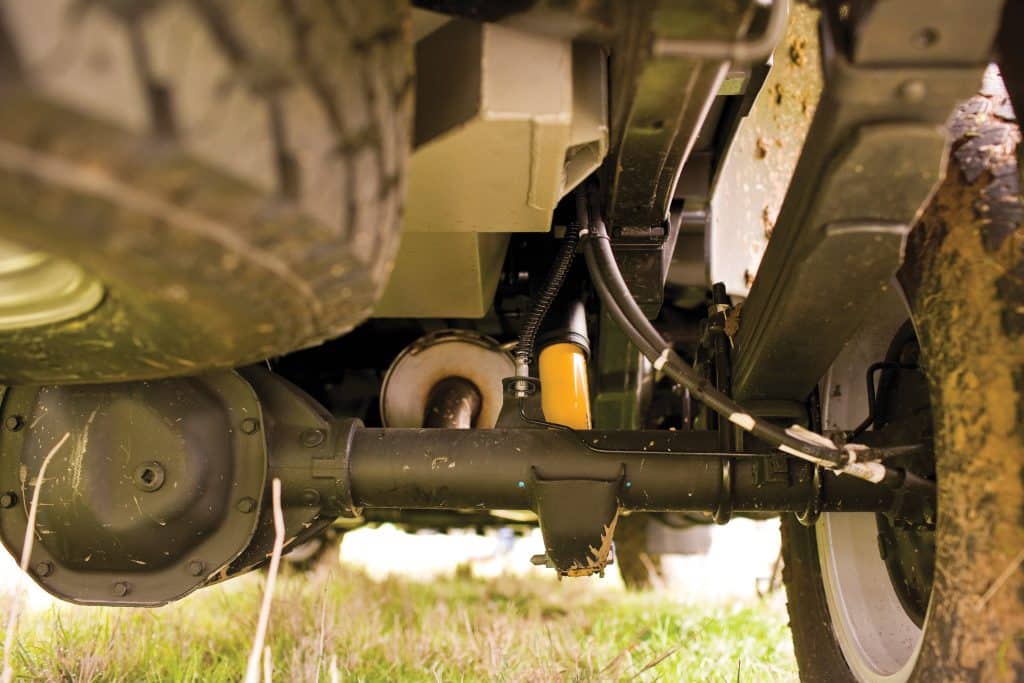Your tow ball weight could be making your tow-tug illegal




In 1988 Stephen Hawking released his widely acclaimed book ‘A brief history of time’. It delved deep into the topic of theoretical physics, and how it and quantum mechanics can be used to explain not only the what of the universe but the how. In it, he discussed the science behind black holes, how time travel would require negative energy density, and tried to unify Quantum Field Theory and General Relativity. Trying to read this book is less confusing than reading most online guides for all the weights you need to factor in with your tow setup.
To make it a little easier to digest, we’re breaking off a bite-sized chunk and taking a closer look at your tow ball weight and the common mistakes people make.
If you’re not across the various acronyms and weights related to towing, have a quick read of our guide to caravan weights.

Before we can dive into the nitty gritty of tow ball weight, it’s important to have a solid understanding of what it is and what it isn’t.
For round numbers, let’s pretend you weigh 100 kg. That’s your mass. Now standing on both feet evenly, each foot will be applying 50kg of weight, for a total of 100kg of weight. Kneel down, and put one hand on the ground. You might find that each foot is only exerting 40kg of force on the ground, while your hand is exerting 20kg. The total mass never changes, but how that mass translates into weight does.
Whether you’re hauling a single-axle box trailer or a 4500kg quad-axle Canyonero deluxe caravan the concept transfers across perfectly. If your van is balancing perfect, then a 3000kg van will put 3000kg to the ground through its tyres. When the tow ball comes into play, some of that weight comes off the tyres and through the tow ball. Just like it did with your hand. The more weight leaning forward, the more weight goes through the tow ball instead of the tyres.
So why is it weight rather than mass like all the other ratings? Well, that’s pretty simple. Mass is a measurement of the amount of matter of something. Weight is the measurement of the force from that mass. Think of it like this. Your hand has bugger all mass. But you can put plenty of weight through it to support your body. Your tow ball mass is probably less than a kilogram. But when your van tilts forward, you can get hundreds of kilograms of tow ball weight. Clear as mud?
We’re on a roll with the similies here, so let’s stick to them for a bit eh? Have you ever seen those truck trailers that have an axle at both the front and the rear? They’re insanely stable and can be near loaded up however the driver wants. Our vans, by comparison, are like walking a tightrope, balancing on one axle. If that axle is smack bang in the middle, you might have half a chance of balancing perfectly on it.
Realistically though, that axle will always be towards the rear of the van or camper. This naturally transfers some of the weight of the van onto the tow ball straight out of the factory. We can change this to some degree ourselves though.
Take a 100L water tank. If it’s mounted directly on your tow ball, it’ll increase your tow ball weight by 100kg when it’s full. As you empty it on your trip, that tow ball weight will vary wildly. Fitting that same tank to the very rear of your van will have the opposite effect and actually decrease your tow ball weight. Think a little like a see-saw and you’re bang-on.
With that see-saw action in mind, the closer to the wheels or the pivot point, the less the weight will affect your tow ball weights. Where possible, keep the heavy items as close to the axles as possible. That includes gear like fridges, jerry cans, firewood and even your barbecue.

All of this is great in theory. But who really cares right? Well you should, if you like staying on the blacktop while you’re driving. Picture loading the back of your tow-tug up with 500L of water, and visually picture what it’s going to do. Your rear suspension is going to massively sag. As a result, your front suspension will lift sky-high as it see-saws off the rear axle. Your rear tyres will overload and you’ll lose steering ability on the front due to the decrease in traction.
Sure. Your tow ball weight should never be that high, but it’s an indication of what too much of it can do to your tow tug.
Unfortunately, having a tow ball weight too low is just as problematic. There are lots of things that can contribute to trailer sway, but too little tow ball weight can be a major contributor.
Let’s get one thing out of the way real quick. Your tow ball weight unladen is almost irrelevant. Sure, it’s good for it to tow well when you’re taking it home. But not at the expense of it towing well on that big lap of Australia. With this in mind, your tow ball weights need to be bang on when you’re actually loaded up on an adventure. That means fill the water tanks, load the fridge, put your pots and pans in the drawers and strap on the kayaks.
When your van is loaded like you would for a typical trip, you’re going to want around 10% of the total weight of the van sitting on the tow ball. The “safe” range is commonly accepted as around 5-15% so don’t stress if you’re at 8 or even 12%. The 10% is a guideline and nice and easy to work out. If your van has an aggregate trailer mass of 2500kg, you should be looking for 250kg of weight at the tow ball.

There are a few different ways you can measure your tow ball weight. Duck into your local hard parts store and you’re likely to find a few contraptions on the shop shelves that’ll do it. In a pinch, you can even use a plank of wood under the tow ball mount down onto a set of bathroom scales. Be warned though, depending on the scales they may not be up for the load.
It’s important to take this measurement with the van sitting flat and the tow ball roughly at the height it’ll sit at when connected. The higher the tow ball sits, the less weight on it and vice versa.
If you’ve got a weighbridge nearby it is a better way to go. Pick a day when they’re not busy, and ask if you can hassle them for 10 minutes. The first measurement you’ll want to do is rolling all four of your tow-tugs wheels onto the bridge with the van connected but sitting just off the bed. This will give you the total weight of your vehicle including the tow ball weight.
Then, disconnect the van, and roll onto the weighbridge again. You’ll find your tow-tug will miraculously weigh up to a few hundred kilograms less. The difference is how much weight going through your tow ball. If you’re feeling adventurous you can unhitch your van on the weigh bridge momentarily. As long as the jockey wheel and all axles are on the pad you’ll get an accurate reading of your van’s total weight.
Yes and no. Just like the overall weights, you’ll need to consider with regard to legalities, there is more to tow ball weights than just making sure you’re at 10% and calling it a day. The first is not all towbars or towbar mounts are created equally. If you have a Ford Ranger or other common dual cab ute, your towbar is probably rated for 350kg. Meaning an 11% tow ball weight of a 3500kg van will have you illegally overloading your towbar. Many other SUVs will have significantly lower-rated towbars than that too. Some Pajeros have as low as 180kg capacity on the bar.
There is one more number that can trip you out and that’s the rear axle load of your tow-tug. The towbar itself may be able to handle 350kg but thanks to our mate leverage, the distance between the tow ball and the rear axle can mean that weight can be multiplied even higher. 1.2-1.4x is a decent ballpark figure. A 350kg tow ball weight can apply an additional 490kg on your rear axle. Combine that with your camping kit, passengers, and the vehicle’s weight, and you could be exceeding your vehicle’s maximum legal axle weights.
If you’re confused trying to make sense of how to comply, don’t worry, it’s a nightmare keeping track of all the numbers. There’s a reason why we always talk highly about any van or camper with a low weight. And any tow-tug with a high load-carrying capacity.
